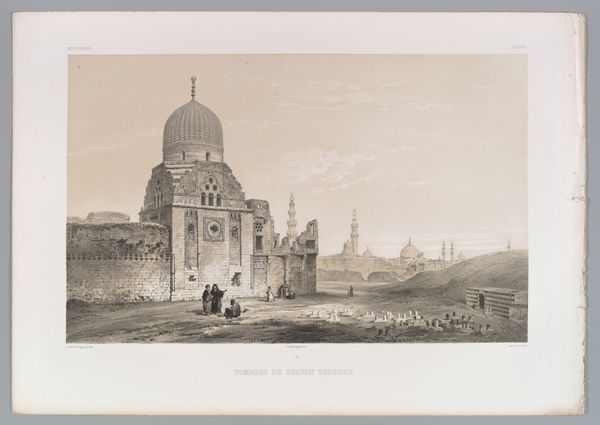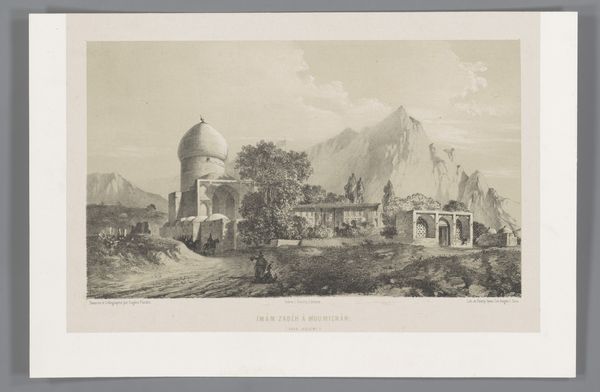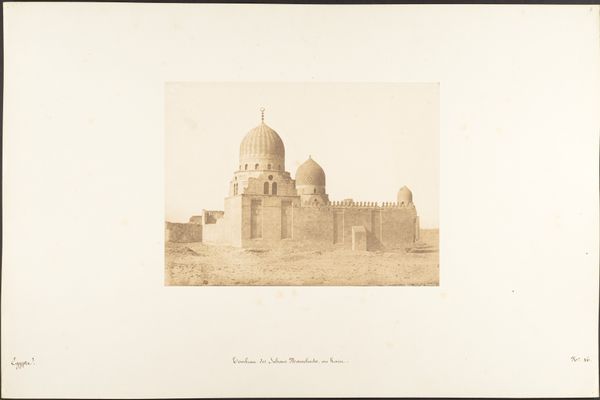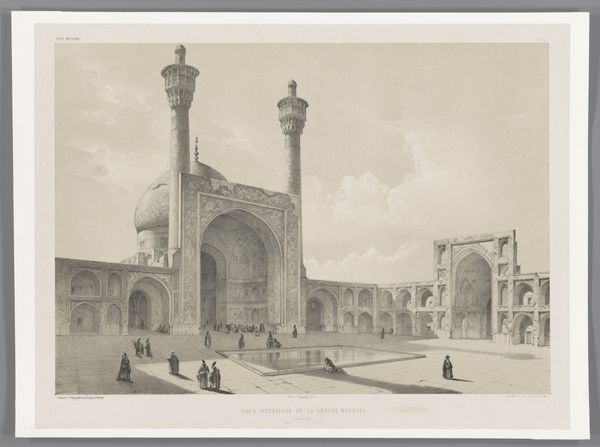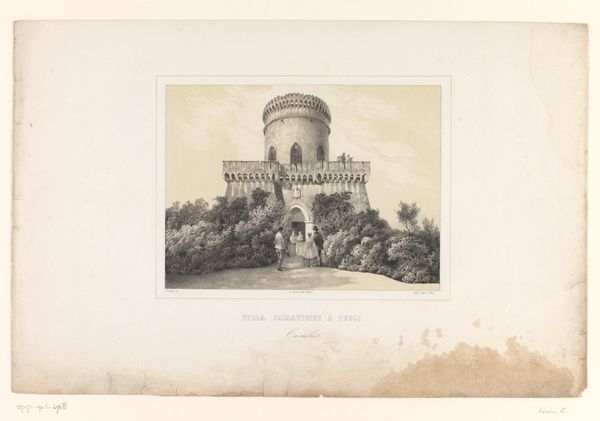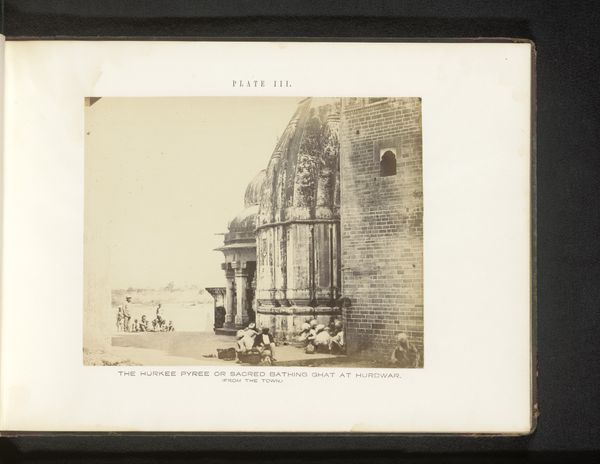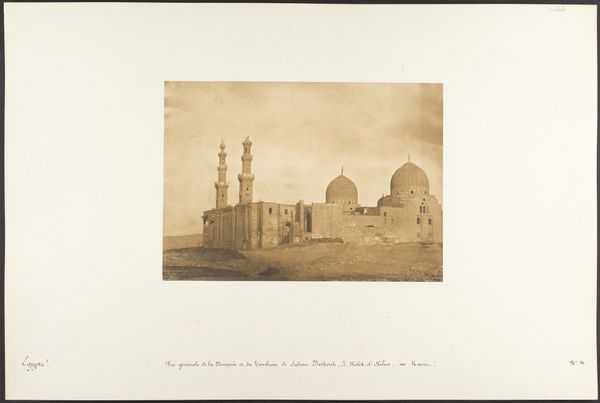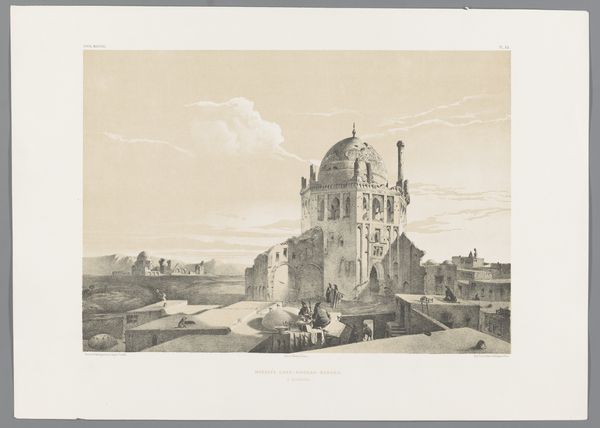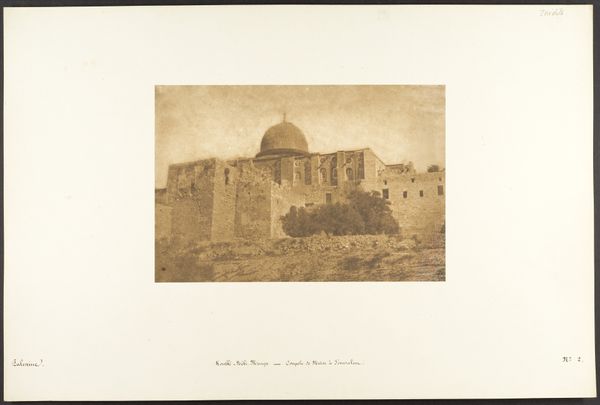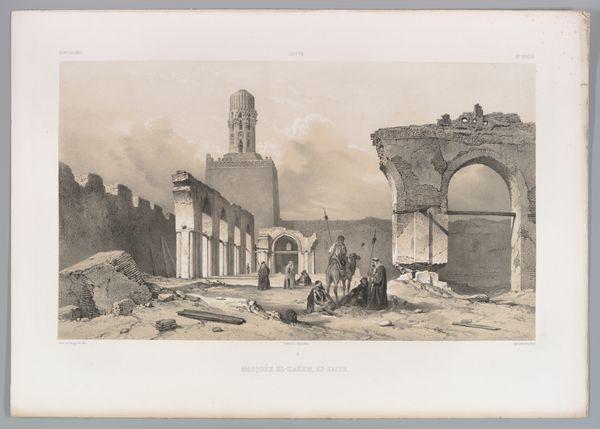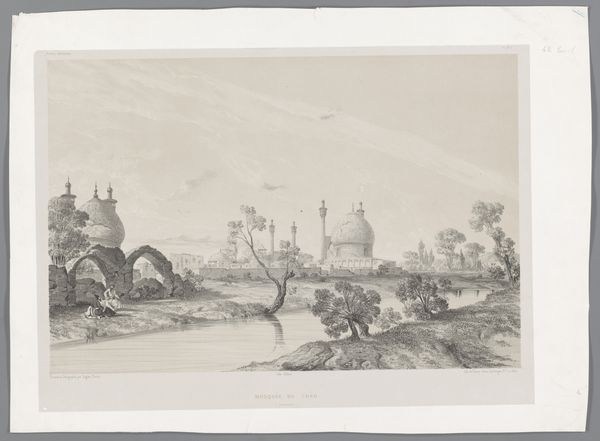
87. Tombeaux et Minarets, au Kaire 1843
0:00
0:00
drawing, print, paper, pencil
#
pencil drawn
#
drawing
# print
#
landscape
#
paper
#
ancient-mediterranean
#
pencil
#
orientalism
#
cityscape
#
islamic-art
Dimensions: Sheet: 22 3/8 × 15 5/8 in. (56.9 × 39.7 cm)
Copyright: Public Domain
Curator: This is "87. Tombeaux et Minarets, au Kaire," a print rendering of Cairo from 1843 by Joseph-Philibert Girault de Prangey. Editor: It has such a quiet, contemplative feel to it. The pencil work is incredibly detailed, almost architectural in its precision, and I can feel a certain gravity in the monument's crumbling facade, evoking both vulnerability and resilience. Curator: The ruins presented here are definitely linked to European colonialism of the early to mid-19th century and to the tradition of the so-called orientalist journey that sees Europe as the observer and Middle Eastern people as "the observed." Editor: True. It's easy to frame such works simply as objective records of places visited, but they participated actively in constructing the image of the "Orient" for a Western audience, laden with fantasies of exoticism and the romantic vision of decay. Note how the rendering presents architecture outside its spatial and urban relation to contemporary Cairo. Curator: Absolutely. The framing of Islamic architecture divorced from contemporary Cairene society feeds into a pre-existing trope of the "East" as somehow existing outside of linear, Western notions of temporal progress, thus requiring "discovery." The figures become tiny, almost ornamental additions in this depopulated portrait. Editor: Exactly! Their positioning allows for an understanding of scale but minimizes their active participation. Do you think de Prangey ever considered this depiction as a commentary of Islamic art’s magnificence? Or was he more interested in visually cataloging sites, not truly interrogating them? Curator: That’s a critical question. His choice of rendering it as a drawing rather than a photograph introduces layers of his own artistic interpretation into how we receive it now, even the crumbling textures evoke that era and perhaps even European perceptions. Editor: Considering the societal forces and historic context it's impossible to receive a print like this at face value. Curator: And to truly engage with it means actively acknowledging these factors of imperialism, orientalism, and representation. Editor: Indeed. Understanding the complexities behind seemingly simple artwork empowers us to have informed and more intersectional dialogues with our history.
Comments
No comments
Be the first to comment and join the conversation on the ultimate creative platform.
